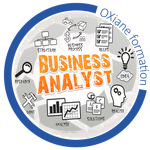Business Analysis Training : learn how to analyze the business requirements and build the right solution.
Programme
Introduction
- Why do you need business models?
- Modeling skills
Defining the Scope of Modeling
- What is a business model?
- Separating textual and diagrammatic elements
- Contrasting scope with level of detail
Crafting a process to develop a business model
- Applying the steps: elicit, analyze, document, validate
- Iterating the steps
- Facilitating requirements workshops
- Mapping models to deliverables
Charting the multidimensional aspects of a business model
- Applying the five Ws approach: who, what, where, when, why and how
- Selecting the right modeling approach
- Employing CASE tools and simulation
Mapping the Business Landscape
- Analyzing the enterprise
- Exploring the enterprise architecture
- Decomposing the architecture into its components
- Usage of a Component Business Model
Applying business rules
- Documenting the constraints: operative and structural
- Representing rules with decision tables
- Scoping Business Functions
Initiating the process with functional decomposition
- Determining the functional hierarchies
- Distinguishing between functions and processes
Drawing UML use case diagrams
- Defining scope and boundary
- Identifying the actors
- Refining the use cases
Documenting business use cases
- Selecting the appropriate level of detail
- Specifying preconditions and post-conditions
- Modeling Business Processes
Applying process modeling techniques
- Workflows
- Events
- Activities
- Decisions
- Sequencing
- Messaging
- Roles
Leveraging Business Process Modeling Notation (BPMN)
- Benefits from a standardized approach
- Sequencing and classifying activities
- Categorizing events
- Emulating a Business Process
Refining business process diagrams
- Choosing the right gateway: decisions, forks and joins
- Mapping the processes to swim lanes and pools
- Supplementing the model with artifacts
Analyzing the Enterprise Structure
- Establishing the business domain
- Documenting the workers and organization units
- Modeling systems, documents, information and tools
Structuring the enterprise with UML class diagrams
- Determining object attributes
- Generalizing and specializing relationships
- Constructing associations between the classes
- Packaging for domains and functional units
Finalizing the Business Model
- Achieving complete coverage with matrices
- Prioritizing features
- Cross-referencing requirements
- Correlating behavior with roles
Contextualizing the model with perspectives
- Documenting business interfaces
- Mapping from means into ends
- Capturing time parameters
Communicating the Model to Key Stakeholders
- Knowing your audience
- Selecting the right level of detail
- Choosing the right model for your audience
- Converting business models into user requirements
- Delivering your models

